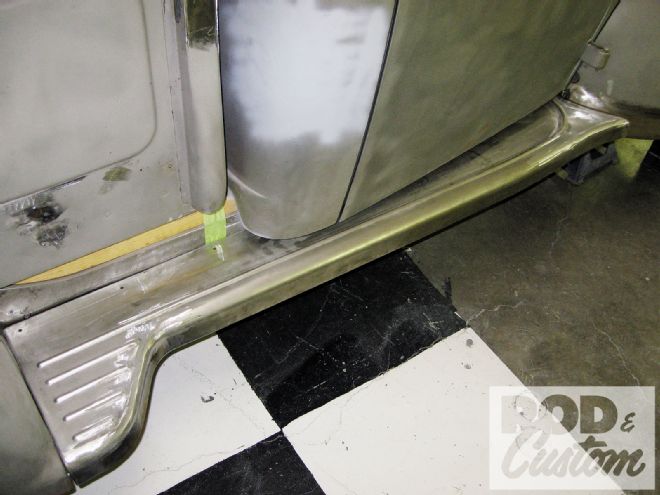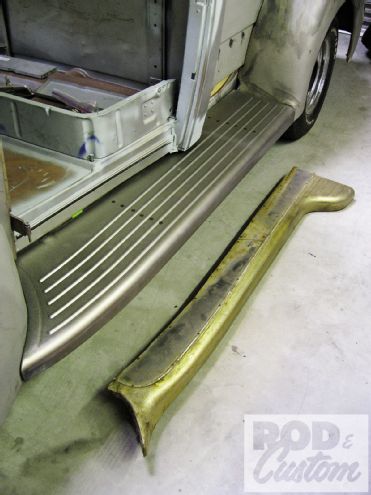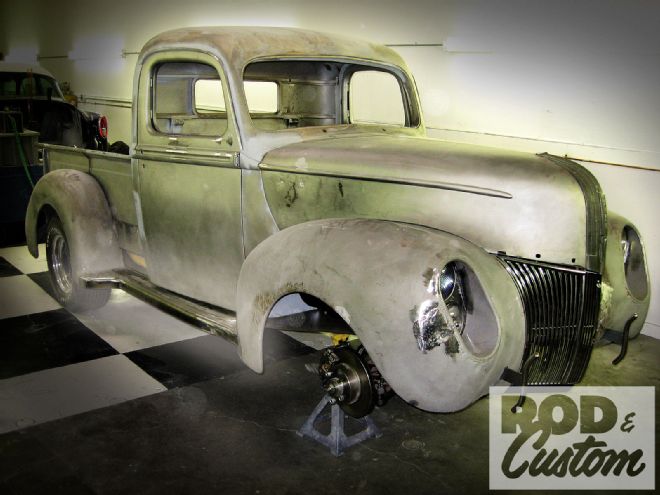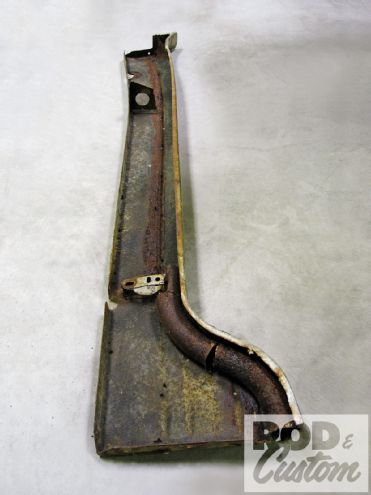
Where it was is where it's at these days. It seems like everyone's scouring the country for old, unrestored hot rods or customs from the glory decades. The question that doesn't often get addressed, however, is this: If you do get lucky enough to acquire an old hot rod or show queen with historical provenance, to what extent should you restore it?
 We started with a brand-new pair of reproduction running boards. I installed each one on the truck to make sure they fit properly before cutting them up.
We started with a brand-new pair of reproduction running boards. I installed each one on the truck to make sure they fit properly before cutting them up.
There are more than a few schools of thought on this topic and, working both for Roy Brizio Street Rods where I've restored cars for Pebble Beach, and at my own shop, where cost is generally more of an issue, I've seen both ends of the spectrum.
On one hand, you could simply make sure the mechanicals are in working order, dust it off (or not), and drive it. On the other hand, you could perform a complete, ground-up restoration, making sure every nut and bolt carbon dates to the exact minute the car was originally completed. Or, if you're like David Pozzi, owner of Ron Lepish's Bay Area-bred '41 Ford trophy queen pickup built in the late '50s, you fall somewhere in between.
Like many show cars of the '50s and '60s, this pickup has been through quite a few documented (and undocumented) iterations, so it has been altered drastically from its appearance in the '62 Hot Rod Yearbook. Pozzi decided to update the chassis and drivetrain while maintaining the basic original appearance of the truck. After having the crew at Roy Brizio Street Rods build one of their signature chassis, Pozzi sent the truck to Slix Custom Automotive, also in the Bay Area, to complete the restoration.

One of the major questions always seems to be how much of the original sheetmetal to keep. The body generally has the largest association with the identity of the car, so my inclination is always to keep as much as possible. But sometimes you run into areas that were too poorly modified or repaired to be acceptable, according to today's standards. The running boards from Pozzi's pickup are a perfect example.
 This is where we draw the line: Although it's kind of cool to see how they did things back in the day (notice the use of mandrel-bent exhaust tubing), we can't risk using the amount of lead or bondo it would take to smooth these original running boards out. They're a little too crude.
This is where we draw the line: Although it's kind of cool to see how they did things back in the day (notice the use of mandrel-bent exhaust tubing), we can't risk using the amount of lead or bondo it would take to smooth these original running boards out. They're a little too crude.
These running boards were cobbled together with pieces of exhaust tubing and scrap metal, and were eventually covered in a 1/2 inch of bondo. By today's standards, these practices are slightly less acceptable and Pozzi wants to know that there's a solid foundation underneath the paint on his '41. Here's a look at what we did to make a copy of these custom running boards.